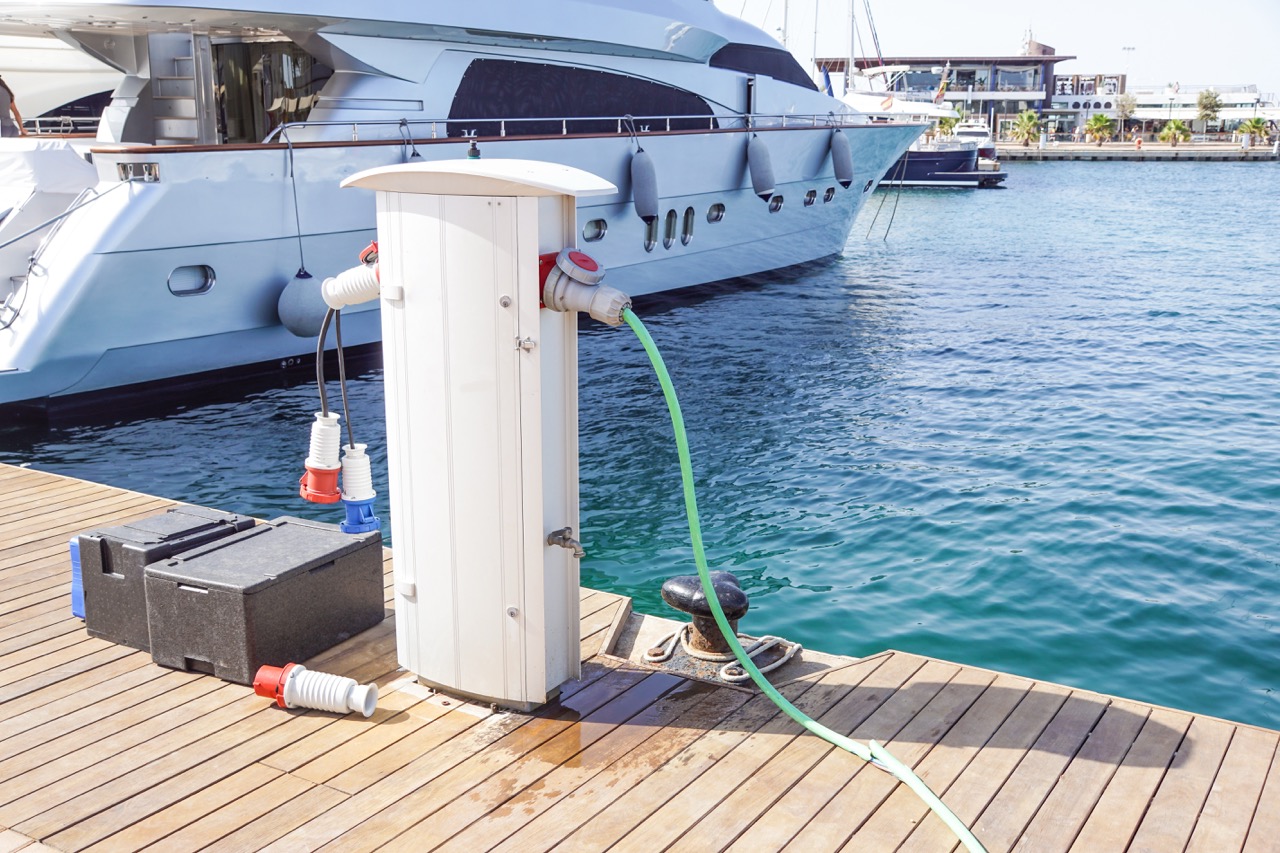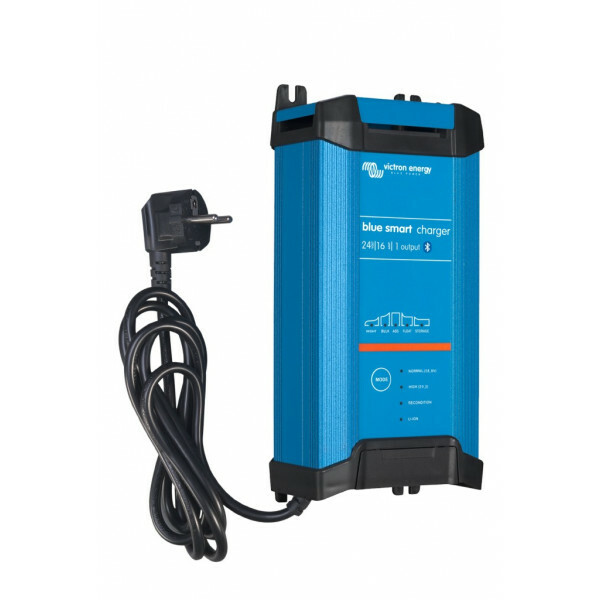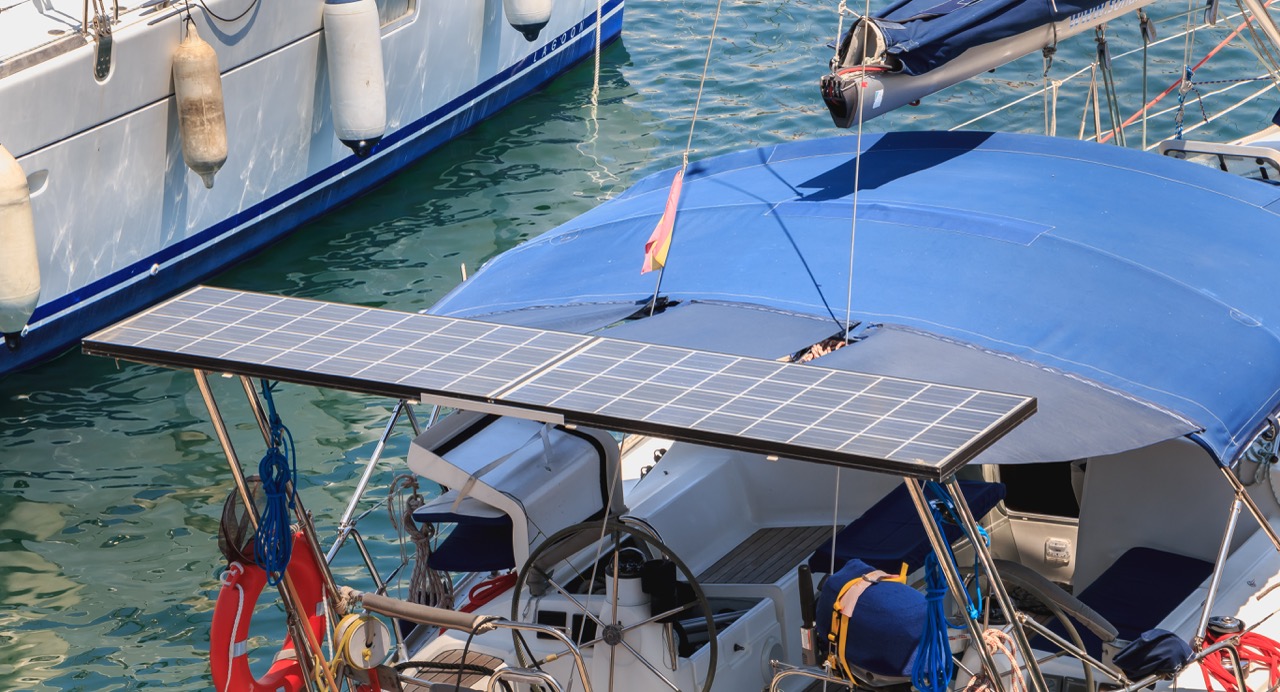
You’ve had a lovely day out on the water, the engine has been running nicely, and you assume your battery will be fully charged again. Yet, after a few days ashore, you notice the fridge is struggling, the lights are dimmer, or starting the engine takes just a little longer. How can that be?
Simple: your battery is probably not fully charged. And that’s not necessarily due to a broken battery or a fault, but often to the alternator. Or rather: to the limitations of what an alternator can do.
In this blog, we’ll explain why simply cruising isn’t enough to fully charge your battery, why AGM and lithium batteries require extra attention, and how you can achieve a full 100% charge with smart solutions.
Why your alternator isn’t enough to fully charge your battery
An alternator is perfect for quickly charging your battery while cruising; that initial part, the so-called bulk phase, is perfectly fine. However, to fully charge your battery (especially AGM or lithium batteries), a higher and more stable charging voltage is needed than a standard alternator provides.
But then it stalls. The final part of the charging process requires a higher and more stable voltage. Most alternators aren’t designed to properly charge the last 20 to 30%. This requires a stable, higher charging voltage, which most alternators can’t deliver. You often see charging voltages around 13.8V, while AGM or lithium batteries need 14.4V or more to charge fully.
Without an additional charging source, such as a battery charger or solar panels, your battery will never be truly full. And that carries risks.
Risk 1: Shorter battery lifespan
A battery that is never fully charged will deteriorate over time. With lithium batteries, problems can arise concerning voltage balance, and with gel or AGM batteries, sulfation will eventually occur. In both cases, this leads to a shorter lifespan.
Risk 2: Loss of capacity
A battery that isn’t fully charged will naturally deliver less capacity. This means less power for things like your fridge, bow thruster, or navigation lights. In other words, you’ll have to recharge sooner. Not ideal if you’re planning on staying at anchor for a while.
Risk 3: Starting problems and malfunctions
A battery voltage that’s too low can also be recognised by starting problems and malfunctions. Insufficient voltage can also lead to errors in sensitive onboard electronics. This is a serious risk, particularly on larger boats with all sorts of smart systems.
AGM and lithium batteries: why a higher charging voltage is crucial
In recent years, AGM and especially lithium batteries have become increasingly popular on board. It’s understandable: they’re compact, lightweight, and deliver a lot of power. However, these battery types also place higher demands on charging, especially if you want to charge them truly fully.
Both AGM and lithium batteries require a charging voltage well above 14 volts. Lithium batteries often need 14.4 to 14.6V, while AGM is usually between 14.2 and 14.4V. And not only that: this voltage must also remain stable during all charging phases, from the rapid bulk phase, through the absorption phase, to the trickle charge (float). This is the only way the battery cells can be properly balanced and fully charged.
Most standard alternators do not deliver such a high and constant charging voltage. The voltage often gets stuck around 13.8V and drops as soon as the engine speed decreases or the engine warms up. This may seem harmless, but with sensitive battery technology, it can lead to cell imbalance, overheating, loss of capacity, and ultimately a much shorter lifespan.
To keep your modern batteries in good health and make the most of their capacity, you’ll need a charging solution specifically tailored to AGM or lithium technology – such as a good battery charger, charge controller, or battery-to-battery charger (B2B charger) with the correct charging profile.

Smart charging with onboard chargers and solar panels
It’s therefore high time to make full use of the batteries. You can do this with boat battery chargers to charge stably via shore power or via free power on deck from solar panels. Charging your battery becomes a lot more pleasant with this.
Onboard chargers: stable charging via shore power
A good battery charger is essential on board. These devices supply the correct voltage and current, matched to the type of battery you are using. Where an alternator stops, the onboard charger continues.
As the charging process is controlled, the battery is neither overcharged nor undercharged. Many onboard chargers can handle multiple battery types: from traditional lead-acid to AGM, gel, and lithium batteries. Some models can even charge multiple batteries simultaneously, for example, a starter battery and a domestic battery.
However, you will need shore power (a standard socket) to use the battery charger. Additionally, ensure you use sufficiently thick cables, fuses, and proper mounting, especially considering the moisture, salt, and vibrations that are normal on board.
Solar panels: free power on deck
Another solution to get your modern batteries fully charged is by using solar panels. Thanks to the efficiency of solar cells, even a relatively small panel can make a significant contribution. Think about topping up your batteries while at anchor or even while underway.
Provided you have a good charge controller (preferably an MPPT controller), solar power can effectively charge even sensitive battery types like lithium or gel batteries. The right controller ensures the charging process is precisely tailored to your battery type’s requirements.
Of course, there are also some limitations. On grey days or in winter, the effect is limited, and you need sufficient deck space to install panels. Nevertheless, most installations today are so compact and user-friendly that they fit perfectly even on modest vessels.

What to consider when choosing the right battery charger?
As mentioned, correctly charging your battery does involve a few things. When choosing a boat battery charger, pay attention to the following points:
- Input voltage: Most battery chargers work on mains power (230V), but there are also models suitable for use with a generator or inverter. So always check where your charger gets its power from.
- Battery capacity: The required charging current depends on the battery capacity (in Ah). The larger your battery bank, the more powerful your battery charger needs to be. Guideline: choose a charging current of 10–20% of the total capacity. Do you have multiple batteries? Note whether they are connected in series or parallel, as this makes a difference to the capacity. Read more about connecting batteries in series or parallel here.
- Suitable for your battery type: Not every battery charger is suitable for every type of battery. Modern chargers can often be set for AGM, gel, or lithium batteries. Check if your charger supports the correct charging profile for the type of battery you are using. This ensures safe and full charging.
- Temperature compensation: A special charger can take temperature into account. This is useful in warm, humid spaces such as an engine room.
- Trickle charger: A battery charger with a trickle charge function is ideal if your vehicle is laid up for extended periods. It keeps your battery topped up without the risk of overcharging. Particularly useful during winter storage or if your boat is frequently connected to shore power.
- Marine grade build quality: Choose a charger that can withstand saltwater, vibrations, and other characteristics of a marine environment.
Conclusion: with the right charger, you’ll have a carefree sail.
With a fully charged battery, you’ll set off more comfortably. For safe navigation, sufficient comfort and, of course, safety, electricity is indispensable. Therefore, don’t just rely on your dynamo, but also invest in the right battery charger and possibly a solar panel system.
If you’re after tailored advice on your battery setup, or you’re looking for a reliable Victron battery charger for your boat, get in touch with the experts at AB Marine Service. We’ll be happy to help!












